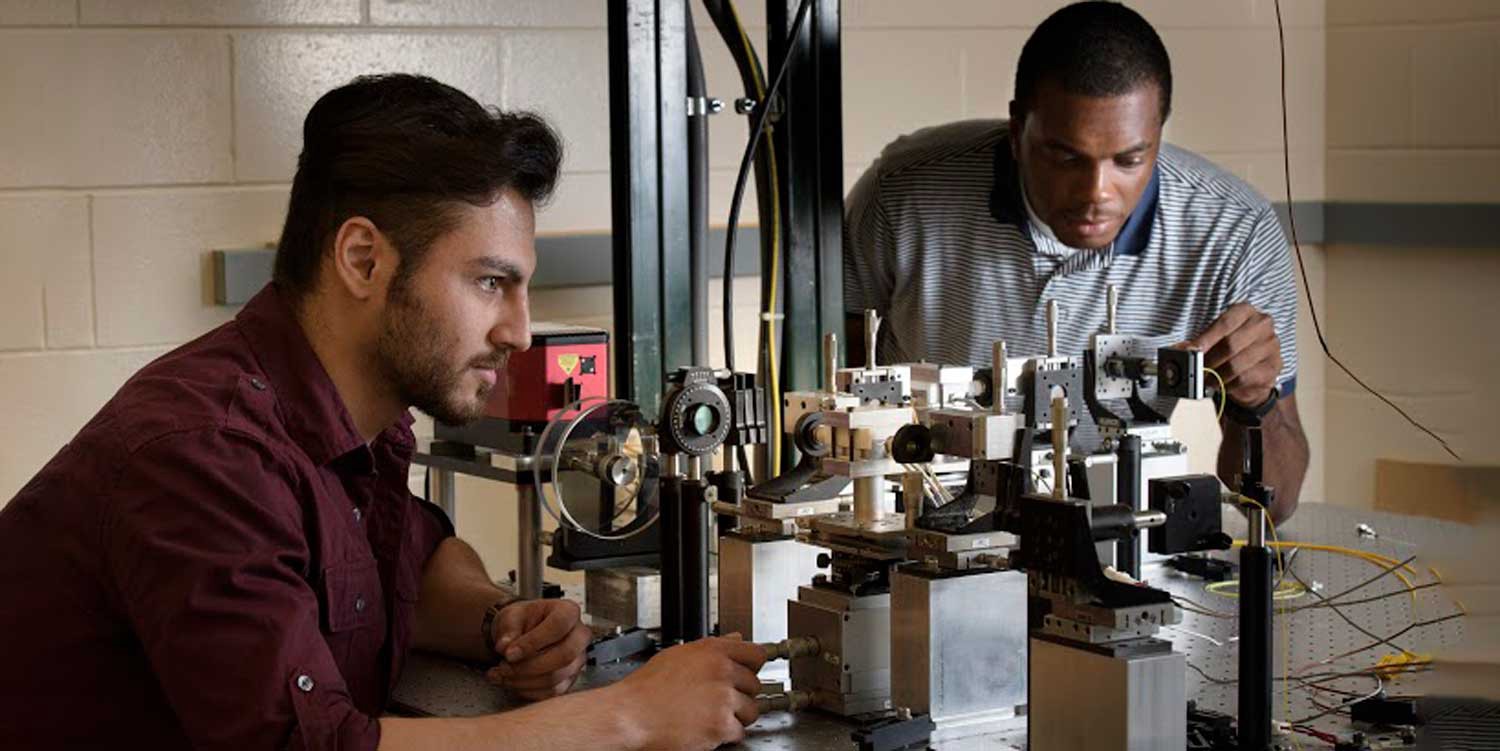A 'gateway' into quantum information processing

Quantum computing is all the rage, and for good reason. This emerging technology promises three things. First, there are “quantitative” advances in numerous applications, from fully secure, unhackable quantum communications through which two parties can generate a code between each other that no eavesdropper can penetrate. Second, the technology can potentially simulate the behavior of a drug in a human body down to the atom level, which results in correctly predicting the therapeutic treatment’s effect on a patient. And third, a large-scale quantum computer can solve some crucial algorithms dramatically faster than even the largest existing supercomputers.
But while quantum information processing has the potential to dramatically secure and speed communications, computations and simulations in these and other fields, the early, exploratory versions of the technology are unstable and inefficient. We’ve built a “gate” — essentially, a transistor for switching quantum signals, the heart of computing — that can make quantum information processing more reliable and predictable.
Photons — the fundamental particles of light — are ideal for quantum communications, due to their speed and their ability to preserve quantum information for a long time because of minimal interactions with the surrounding environment. But the fact that photons do not interact with one another makes it difficult to process the quantum information encoded in them, resulting in processes with a huge downside: They work only a fraction of the time.

To get around this constraint, our team has tried to encode as much quantum information as possible in each photon, reducing the need for photon-to-photon interactions. The basic units of quantum information are quantum bits, or qubits; we use multi-level units of quantum information, called qudits, which can carry even more quantum information than the traditional qubits. Because each photon can simultaneously occupy multiple frequencies or exist at multiple times, a process referred to as “photonic degrees of freedom” — encoding qudits in two different photonic degrees of freedom (time and frequency) lets us encode a large chunk of quantum information (the equivalent of 10 qubits in each photon). We can then use the qudits to build “gates” to manipulate the quantum data between the two degrees of freedom. We have demonstrated these gates in a deterministic manner — meaning they work every time.
Challenges still need to be overcome to fully develop our approach to quantum information processing. For example, to attain the true power of quantum information processes and outperform classical supercomputers, more than 50 qubits and a large number of quantum gates are needed. To achieve this level, our team is looking to scale up the amount of accessible quantum information by increasing the number of photons involved.

Our work is part of a larger body of research into quantum science at Purdue. For instance, the University recently launched a quantum center, the Purdue Quantum Science and Engineering Institute (PQSEI). Its goal is to bring together research groups active in the quantum information science field, ranging from atomic physics and nanophotonics to quantum applications and solid-state quantum systems research. Through interdisciplinary research, Purdue aims to contribute significantly to the future of quantum information processing.
Private-sector companies are working on quantum information processing solutions as well. Governments have also identified the importance of quantum science and quantum computation. For example, in the United States, the National Quantum Initiative Act was passed in December 2018 as part of a 10-year plan to speed up the development of quantum information science and technology applications. The European Union has its Quantum Flagship Initiative while Canada has invested heavily in quantum research in the last decade.
By helping make quantum information processing more reliable and predictable, our research could help swing open a “gate” to the quantum information science future.
by Dr. Poolad Imany, Postdoctoral Associate, Photonic Quantum Information Processing, Purdue University College of Engineering’s Ultrafast Optics and Optical Fiber Communications Laboratory and Professor Andrew M. Weiner, Scifres Family Distinguished Professor of Electrical and Computer Engineering, Purdue University College of Engineering’s Ultrafast Optics and Optical Fiber Communications Laboratory
